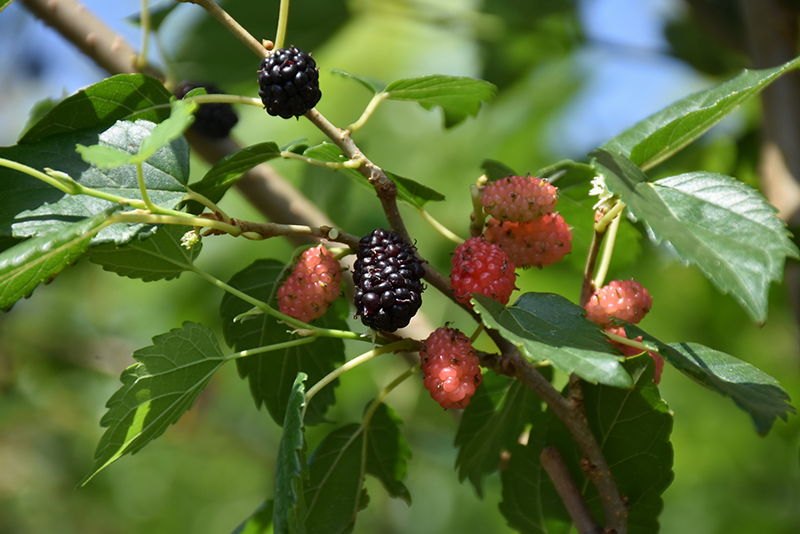Height: 50 feet
Spread: 40 feet
Sunlight:
![]()
![]()
Hardiness Zone: 4a
Description:
A broad-crowned, medium sized native tree with dark green, oval to lobed leaves on dense branches, making it a great windbreak or shade tree; red to dark purple berries in late summer to fall are edible and popular with birds and mammals
Ornamental Features
Red Mulberry is primarily grown for its highly ornamental fruit. The red fruits which fade to deep purple over time are held in abundance in spectacular clusters from mid summer to early fall. The fruit can be messy if allowed to drop on the lawn or walkways, and may require occasional clean-up. It has dark green deciduous foliage. The serrated oval leaves turn outstanding shades of yellow and in the fall.
This plant is primarily grown as an ornamental, but it's also valued for its edible qualities. The oval tangy berries are most often used in the following ways:
- Fresh Eating
- Preserves
- Wine-Making
- Canning
- Freezing
Landscape Attributes
Red Mulberry is a dense multi-stemmed deciduous tree with a more or less rounded form. Its relatively coarse texture can be used to stand it apart from other landscape plants with finer foliage.
This is a high maintenance tree that will require regular care and upkeep, and is best pruned in late winter once the threat of extreme cold has passed. It is a good choice for attracting birds and squirrels to your yard. Gardeners should be aware of the following characteristic(s) that may warrant special consideration;
- Messy
Red Mulberry is recommended for the following landscape applications;
- Shade
- Windbreaks and Shelterbelts
- Naturalizing And Woodland Gardens
Planting & Growing
Red Mulberry will grow to be about 50 feet tall at maturity, with a spread of 40 feet. It has a low canopy with a typical clearance of 4 feet from the ground, and should not be planted underneath power lines. It grows at a medium rate, and under ideal conditions can be expected to live for 50 years or more. This is a dioecious species, meaning that individual plants are either male or female. Only the females will produce fruit, and a male variety of the same species is required nearby as a pollinator.
This tree does best in full sun to partial shade. It prefers to grow in average to moist conditions, and shouldn't be allowed to dry out. This plant does not require much in the way of fertilizing once established. It is not particular as to soil type or pH, and is able to handle environmental salt. It is highly tolerant of urban pollution and will even thrive in inner city environments. This species is native to parts of North America.

